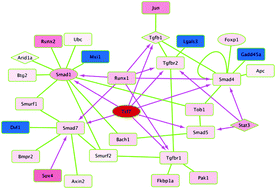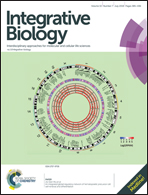An integrated global regulatory network of hematopoietic precursor cell self-renewal and differentiation†
Abstract
Systematic study of the regulatory mechanisms of Hematopoietic Stem Cell and Progenitor Cell (HSPC) self-renewal is fundamentally important for understanding hematopoiesis and for manipulating HSPCs for therapeutic purposes. Previously, we have characterized gene expression and identified important transcription factors (TFs) regulating the switch between self-renewal and differentiation in a multipotent Hematopoietic Progenitor Cell (HPC) line, EML (Erythroid, Myeloid, and Lymphoid) cells. Herein, we report binding maps for additional TFs (SOX4 and STAT3) by using chromatin immunoprecipitation (ChIP)-Sequencing, to address the underlying mechanisms regulating self-renewal properties of lineage-CD34+ subpopulation (Lin-CD34+ EML cells). Furthermore, we applied the Assay for Transposase Accessible Chromatin (ATAC)-Sequencing to globally identify the open chromatin regions associated with TF binding in the self-renewing Lin-CD34+ EML cells. Mass spectrometry (MS) was also used to quantify protein relative expression levels. Finally, by integrating the protein–protein interaction database, we built an expanded transcriptional regulatory and interaction network. We found that MAPK (Mitogen-activated protein kinase) pathway and TGF-β/SMAD signaling pathway components were highly enriched among the binding targets of these TFs in Lin-CD34+ EML cells. The present study integrates regulatory information at multiple levels to paint a more comprehensive picture of the HSPC self-renewal mechanisms.



 Please wait while we load your content...
Please wait while we load your content...